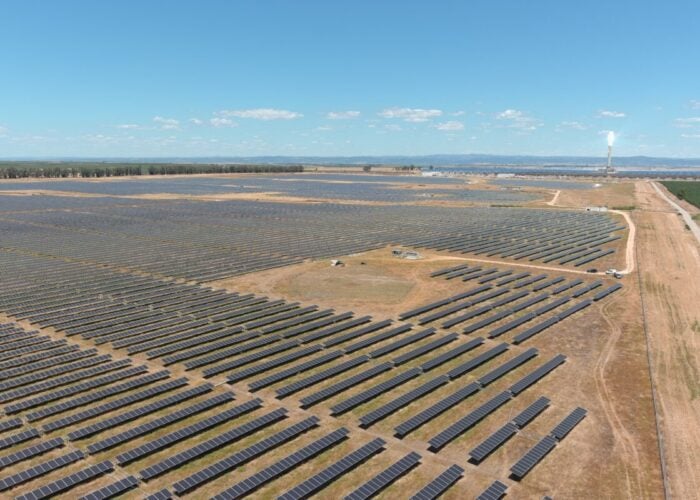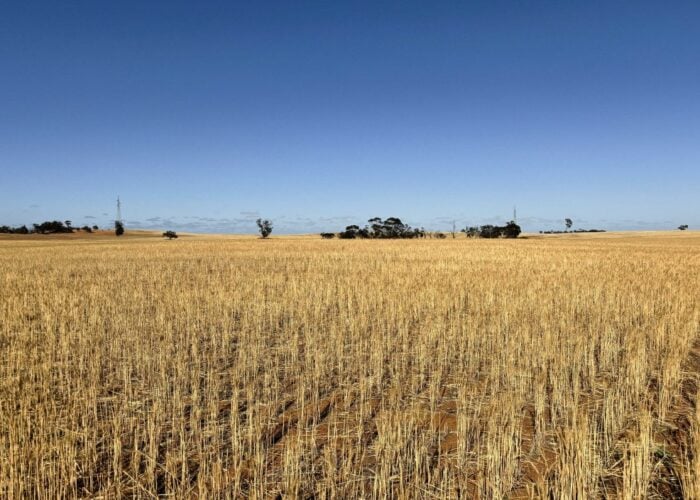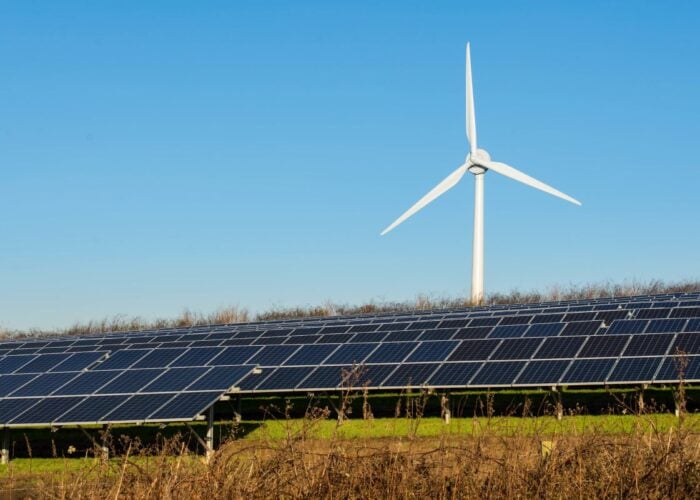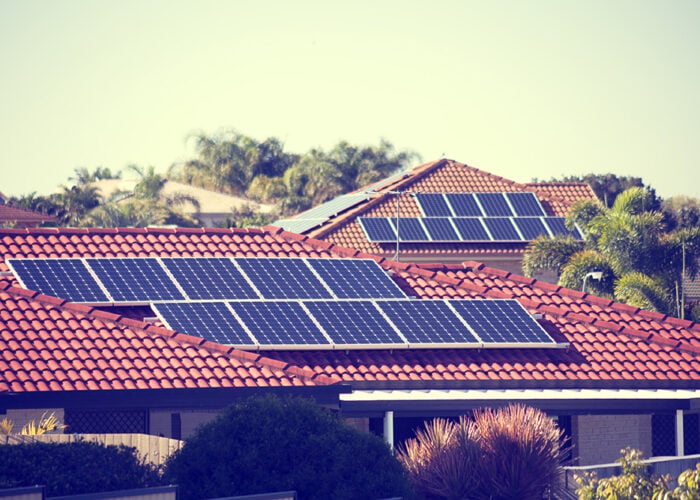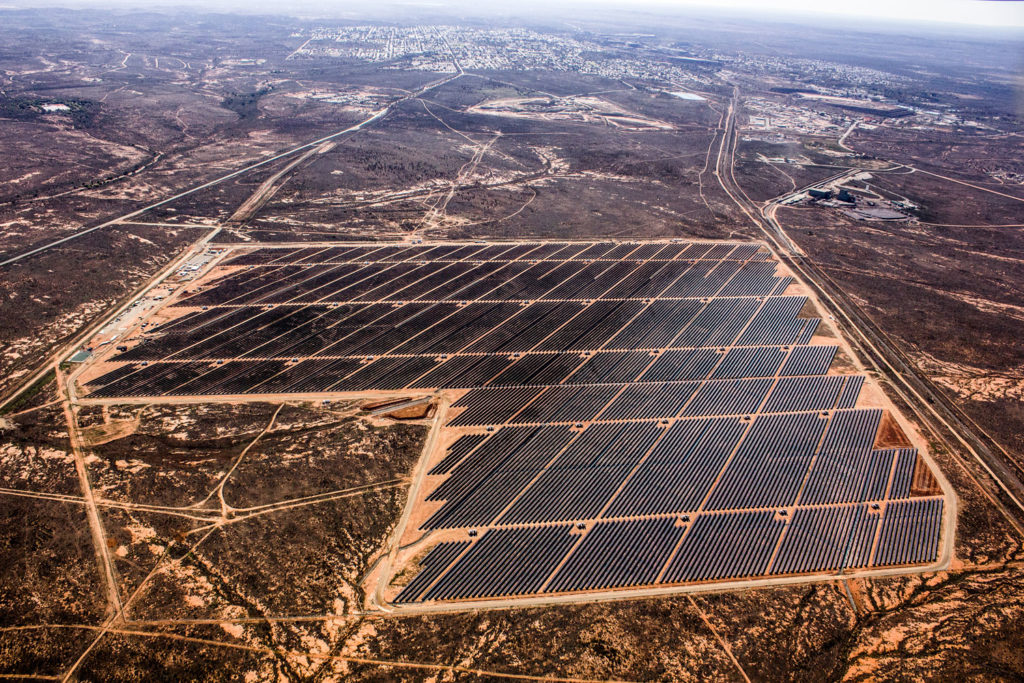
Despite having the ideal attributes to become a clean energy superpower, Australia has never quite lived up to its potential. Will Norman assesses the barriers and asks whether recent investment announcements could turn the tide.
Australia seems as if it was designed for solar PV. World beating solar irradiance levels and swathes of available land has led it to become one of the largest markets in the world for both utility-scale and rooftop solar. The latter in particular is a huge market in Australia, but the utility-scale segment has had a more turbulent time.
Unlock unlimited access for 12 whole months of distinctive global analysis
Photovoltaics International is now included.
- Regular insight and analysis of the industry’s biggest developments
- In-depth interviews with the industry’s leading figures
- Unlimited digital access to the PV Tech Power journal catalogue
- Unlimited digital access to the Photovoltaics International journal catalogue
- Access to more than 1,000 technical papers
- Discounts on Solar Media’s portfolio of events, in-person and virtual
Historically, Australia has been mostly coal-powered, but that coal power fleet is ageing and becoming less financially rewarding, to say nothing of its effects on climate. The Australian Energy Market Operator (AEMO) is engaged in the long-term retirement of the country’s coal capacity and has said that by 2033 the shift away from coal needs to be over 60% completed. This in itself starts the clock ticking for Australia’s energy transition, but AEMO has gone further and said that “urgent” investment into grids and renewables is needed if the country is to avoid energy security and availability issues.
No surprises, then, when the Clean Energy Council (CEC) – Australia’s preeminent renewable energy association – said it was officially “concerned” with the lack of financial commitments to new renewables projects in the first nine months of 2023. Just six new renewables generation projects reached financial close in the three quarters of the year, adding up to around AU$375 million (US$248 million) and 509MW planned capacity.
Projects are still being built and connected to the grid, but the pipeline of projects to come, which generally take around 24-28 months from financial close to operations, is running dry.
This article will look into what has been done recently to get investment flowing again, the short-term outlook for Australia and the factors that led to the investment drought in the first place.
Too successful?
Since 2001, Australia has had some form of the Renewable Energy Target (RET) legislation in place, which required that 20% of the country’s energy was sourced from renewables by 2020. In 2015 the scheme was split into two strands, the large- and small-scale Renewable Energy Targets, which created financial incentives for deploying and using renewable energy.
By 2017 over half of the 2020 target had been met and by mid-2019 it was exceeded. This was a significant achievement and spoke to the confidence that investors had in Australia and its potential for renewables. But the then-government put nothing in place to follow up or expand on the RET beyond its initial 33,000GWh target, which left a vacuum of national framework or support for investment.
State projects continued, as did government support through the Clean Energy Finance Corporation, but the big draw for large-scale private investment had gone.
This made Australia less competitive and less attractive. As the RET aged out, the COVID-19 pandemic began and caused a raft of problems worldwide. Global supply chains and labour shortages since have played their part too, as has international competition.
The CIS Expansion
Eventually, on 23rd November 2023, Australia’s Minister for Climate Change and Energy Chris Bowen announced expansions to the country’s Capacity Investment Scheme (CIS) initiative. The CIS will see the government look to underwrite investments into 32GW of renewable energy generation and storage capacity, enough to cover half of current national electricity market (NEM) customer demand.
Of the 32GW, 23GW will be allocated to renewables generation and 9GW to energy storage. The government will underwrite the capacity investments through a ‘Contract for Difference’ scheme where a price is agreed on for the power produced and money exchanged either way depending on how the spot prices on the market fluctuate. Though the impact of the CIS expansion is currently unproven, the response has been positive and the government said that it was intended to provide certainty for investors.
Chief executive of the CEC Kane Thornton said: “We have today welcomed news that the Albanese Government has taken decisive action to provide massive support to bring forward new investment in large-scale generation.
“While renewable energy remains the lowest cost form of new generation, there is a clear role for government to facilitate the enormous levels of investment needed to transition our energy system.
“We look forward to working closely with the federal government on the detailed design of the contracting mechanism to ensure it is effective and delivers the new investment and lower power prices that are expected.
“It’s crucial that any new policy provides increased certainty to investors and the enormous private sector capital and capability that will be essential to Australia becoming a clean energy superpower.”
The expansion to the CIS, along with a modified National Energy Transformation Partnership (NETP) scheme and binding agreements with state governments to allow for public procurement of renewables capacity, is the closest thing that Australia has seen to the coordinated framework introduced by the Biden administration in the US last year, the Inflation Reduction Act (IRA). At time of writing, the financial extent of the Commonwealth government’s underwriting commitments has not been revealed, but the support will take the form of competitive auctions at regular intervals.
Whilst it’s a promising move from the government and ultimately has the potential to stimulate the investment that Australia needs to get back on track with its renewable energy and decarbonisation targets, it’s useful to ask how we got here.
International competition
In response to questions from PV Tech Power, the CEC cites international competition as a reason for the pressure on the pipeline of Australian renewables. The CIS expansion plan is first and foremost a bid to remain competitive against other international schemes.
“A large pipeline of renewable projects across Australia is in the midst of heightened global competition for capital investment, a skilled workforce, and equipment, driven primarily by the Biden Administration’s Inflation Reduction Act in the United States,” a spokesperson says.
For some incidental context, in its Power Playbook document the CEC says that the IRA has been “more consequential” in the increased push for renewables investment and deployment the world over than the Russian invasion and subsequent war in Ukraine, which triggered an energy price crisis for much of the developed world that saw them turn to renewable energy.
This isn’t the first time that the IRA has caused alarm overseas. Markets in much of the developed world have had to play catchup to the US’ legislation and the investment it has drawn; a report from the Solar Energy Industries Association (SEIA) found that solar and storage investments had added US$100 billion to the US economy as of August 2023 due directly to the IRA.
Echoing what the CEC says, Niall Brady, head of solar and storage at the Clean Energy Finance Corporation (CEFC) – the Australian government’s green investment bank – tells PV Tech Power that “the US Inflation Reduction Act has increased global competition for finance as many countries react with their own initiatives to attract capital”.
In its Power Playbook report from October the CEC said that the government needed firm, decisive and well-planned actions to carve out Australia’s role in the international renewable energy marketplace. The document said that “we [Australia] are currently lacking a framework to bring the domestic transition and the international opportunities together, understand the resource and infrastructure requirements in capturing these opportunities, and provide a cohesive roadmap for coordinated public and private investment.”
However, this is not to say that the government has sat idle. In its Federal Budget for 2023-24 it made AU$4 billion (US$2.6 billion) available for renewable energy technologies, tenders and energy storage. Niall Brady also points out to this publication that, as a government-owned investment bank, the CEFC has backed specific large renewables projects from international companies: “Recognising that private sector capital is critical to the clean energy transition, CEFC finance works to attract this asset class to large-scale renewable energy projects around Australia.
“The AU$75 million (US$49 million) CEFC finance to ACEN Australia to support its 8GW portfolio including [the 400MW Stubbo solar farm] was part of a debt raise targeting AU$600m (US393 million) of capital, while its AU$100 million (US$65 million) investment in the 300MW Walla Walla Solar Farm – its largest single commitment to a solar farm since inception – was alongside finance from ING and Export Development Canada.”
Yet it would be fair to say these don’t represent a framework with the scale of the IRA or the EU’s Green Deal, and the CEC’s financial reports mentioned above show that the piecemeal approach hasn’t drawn investment in the same way either.
Does bigger equal better?
Another factor contributing to a challenging investment environment is the increasing size of renewable energy projects, which is leading to “lumpier” trends in commitments, CEFC’s Niall Brady says. And one need only look to recent announcements from the Australian solar market for confirmation of this.
In July, a newly established aboriginal development group – the Aboriginal Clean Energy Partnership – entered into an agreement to develop a 900MW solar PV plant to support a green hydrogen export facility. (Financial investments are scheduled for mid-2024 to 2025 as of the time of writing.)
ACEN Australia, subsidiary of the Philippines-based energy company, also developed the 400WM Stubbo solar farm which is currently under construction and expected to begin operations in 2025. Brady says that Stubbo “is nearly the cumulative size of the ten separate solar projects financed by the CEFC under its Large-Scale Solar Programme launched in 2015.”
He continues: “This means that while at times there may be fewer transactions closed, those that will often have significant renewable energy generation capacity.”
One that didn’t close was the planned 5.4GW Uaroo solar and wind hub in the Pilbara region of Western Australia. Mining giant Fortescue, through its subsidiary Pilbara Energy (Generation), abandoned the project in October during the approvals process, according to the Western Australia government’s Environmental Protection Authority. It would have contained 3.3GW of solar PV and the plan was to use the renewable energy from the hub to power Fortescue’s mining operations in the mineral-rich Pilbara region. Fortescue did not respond to a request for comment from PV Tech Power.
Perhaps the epitome of a large, unwieldy and ambitious project is the so far ill-fated Australia-ASEAN Powerlink (AA Powerlink). It still has a planned capacity of between 17-20GW of solar PV, 36.42GWh of energy storage and 4,200km of subsea cable to reach from the Northern Territory to Singapore, but its owner, Sun Cable, recently entered administration and went up for sale.
It is true that bigger projects are more cumbersome to plan, slower to develop and harder to attract investment for. Indeed, the CEC outlines “the complexity of planning and approvals processes for projects” as one of the hurdles that Australia needs to overcome to generate renewables investment.
It continues: “The success of a timely clean energy transformation for Australia relies on strong partnership between industry, investors and federal, state and territory governments, to direct our collective resources and work together in expediting assessment and deployment processes for different renewable energy projects and infrastructure.”
Storage succeeds
“There is also a trend towards hybridisation with co-located solar and battery energy storage systems (BESS)” the CEFC says.
The same CEC investment report that found a concerning downturn in renewables generation funding showed that energy storage was the one sector of the Australian energy transition that was succeeding. In Q2 2023, for example, 1497MW, or 3802MWh, of energy storage projects reached financial close, which massively exceeded the rolling quarterly average for the preceding year. Notably, the report found that all of the projects that reached financial close during Q2 had funding or concessional financing from a government body.
However, investment in storage dropped off in Q3 too, with just 12MW/13MWh of new projects reaching financial close.
More recently, November 2023 saw 2,800MWh of BESS awarded contracts under the New South Wales (NSW) government tender for firming infrastructure, and all the similar storage auctions in NSW have been oversubscribed.
A shift towards co-located solar and storage plants is well-suited to a grid like Australia’s, where the operator the National Electricity Market (NEM) has committed to phasing out coal generation in the next decade. Dispatchable power from storage coupled with low-cost solar generation – whilst the capital cost of both is trending downwards – represents a reliable replacement for coal plants. The recently announced expansion of the CIS will operate auctions in a “contracts for difference” model, with a view to stabilising prices and making investments more certain, which can guarantee prices for stored energy.
The CEFC says: “Australia needs to install about 29GW of large-scale renewable generation in the national electricity market (NEM) alone – 3.7GW a year or 310MW per month – to achieve 82% renewables by 2030–31.
“On top of this we need significant investment in transmission, rooftop solar and large- and small-scale storage – the CEFC estimates that some AU$120 billion (US$79 million) of capital expenditure is needed to finance new solar, wind, transmission, storage and ancillary services to 2030/31 in the NEM in order to meet renewable energy and emissions goals.”
Looking forward
Looking to the future, despite the setbacks, the CEFC is positive. In response to questions posed prior to the announcement of the CIS expansion, Niall Brady said that: “Despite sector challenges, we expect a number of projects will reach financial close in the short term, many of which have been successful in state offtake schemes.”
Indeed, state schemes have seen some success – if inconsistently across the country – despite the lack of central guidance. Queensland has set an ambitious target of 22GW of renewables capacity by 2035 which included the development of 12 renewable energy zones (REZ) which are specially designated for solar and wind deployments.
It also reiterated its confidence in the trend for co-located solar and storage, which it said would “develop new revenue opportunities and should drive the next wave of solar investment.”
Prior to the November CIS expansion, the CEC was more cautiously optimistic. It cited challenges to grid capacity, labour shortages, uncertainty regarding the retirement of coal plants and supply chain issues, but says that “If we overcome these barriers, we are confident in delivering a more reliable and low-cost energy system, achieving 82% renewable energy by 2030, delivering our long-term emission reduction targets, and setting Australia up to become a clean energy superpower.”
A comparison with its statement following the CIS announcement perhaps sums up the shift in attitude for Australia’s renewables future: “[The legislation] is a significant commitment that is intended to put Australia back on track to achieve the government’s policy of 82% renewables by 2030, replacing ageing coal-fired generation with cheaper renewable energy and driving down power prices.
“There is now wide acceptance of the need to accelerate our shift to renewable energy.”

